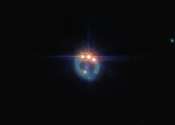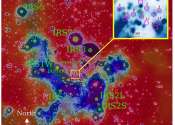Image: Hubble examines elliptical galaxy Messier 105
It might appear featureless and unexciting at first glance, but NASA/ESA Hubble Space Telescope observations of this elliptical galaxy—known as Messier 105—show that the stars near the galaxy's center are moving very ...









